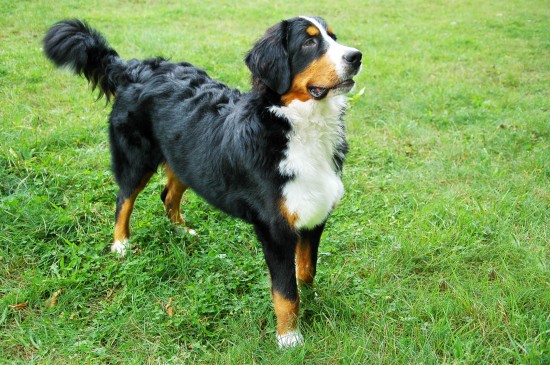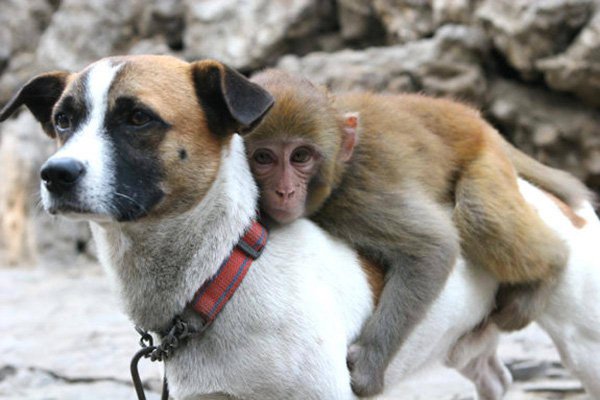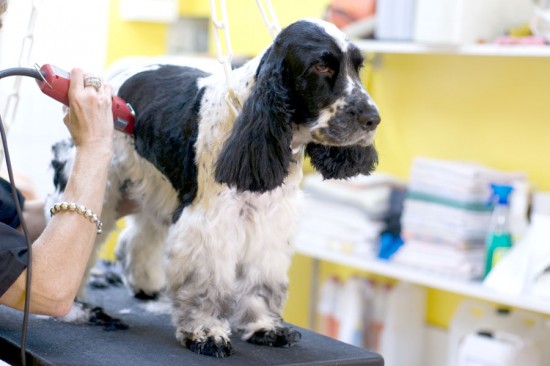

The greater Swiss mountain dog is one of the Swiss Sennenhund breeds, and the largest of the four. Males can stand up to 28.5” tall at the withers, with females reaching up to 27”. Dogs of the breed can weigh up to 70kg, making the dog a large to giant breed and one that is both tall and heavy.
The breed is considered to be very physically strong with heavy bones, but they retain the agility to be able to work outside and perform a range of working tasks with plenty of endurance. They are excellent family dogs for people who love large breeds, and tend to be friendly, calm and loving.
The breed’s coat is black, white and rust in colour, with a thick, double layered coat that is medium to long. The breed sheds hair throughout the year, and once or twice a year they also shed particularly heavily, blowing their coat to prepare for the new season.
Considering ownership of any large or giant breed of dog is a decision that should be carefully thought over with plenty of research, and this is particularly true when considering the potential lifespan and general health of the breed as a whole. In this article, we will look at the hereditary health and average lifespan of the greater Swiss mountain dog in more detail. Read on to learn more.
The average lifespan of the greater Swiss mountain dog is around 11 years, which is slightly lower than the norm for all pedigree dog breeds, but a good average for dogs of a similar size and build.
This indicates that the greater Swiss mountain dog tends to be relatively robust and healthy, and not as prone to many of the various health problems that commonly affect large pedigree dogs.
Like most large and giant breeds, the greater Swiss mountain dog’s conformation may present additional challenges to the overall health and wellness of the dog. Particular concerns for the breed are:
The coefficient of inbreeding statistic for the greater Swiss mountain dog is 0.2%, which is incredibly low and indicates that the breed is not subjected to any great degree of inbreeding. Maintaining a very low figure is important to ensure the ongoing genetic diversity of the breed as a whole.
Various different health tests and pre-breeding screening programmes are in place for the greater Swiss mountain dog breed, in order to identify a propensity to certain health problems and help to reduce their occurrence rate across the breed.
The British Veterinary Association currently recommends three different tests for potential parent dogs:
Greater Swiss mountain dog breed organisations also advise that dogs be tested for good character, and be screened for hereditary heart disease. It is also advisable to test puppies for eye conditions once they reach seven weeks of age, and before they are offered for sale.
As well as the known conditions listed above that can be tested for prior to breeding and in the subsequent litters, the greater Swiss mountain dog breed as a whole may potentially suffer from other issues that have a hereditary factor to them as well. While no pre-breeding testing is available for these conditions, owners of the breed should make themselves aware of the following health conditions:
 How to Determine Animal clinic in Your Area
How to Determine Animal clinic in Your Area
Ta
How to Determine Animal clinic in Your Area
How to Determine Animal clinic in Your Area
Ta
 Can Dogs Eat Cat Food Long-term?
Can Dogs Eat Cat
Can Dogs Eat Cat Food Long-term?
Can Dogs Eat Cat
 Pekin Robin & Silver-eared Mesia
Pekin Robin & Sil
Pekin Robin & Silver-eared Mesia
Pekin Robin & Sil
 Lost Your Pet? Let technology come to the rescue!
Lost Your Pet? Let technology come to the rescue!
Lost Your Pet? Let technology come to the rescue!
Lost Your Pet? Let technology come to the rescue!
 Having Your Dog Professionally Groomed
Having Your Dog P
Having Your Dog Professionally Groomed
Having Your Dog P
Copyright © 2005-2016 Pet Information All Rights Reserved
Contact us: www162date@outlook.com